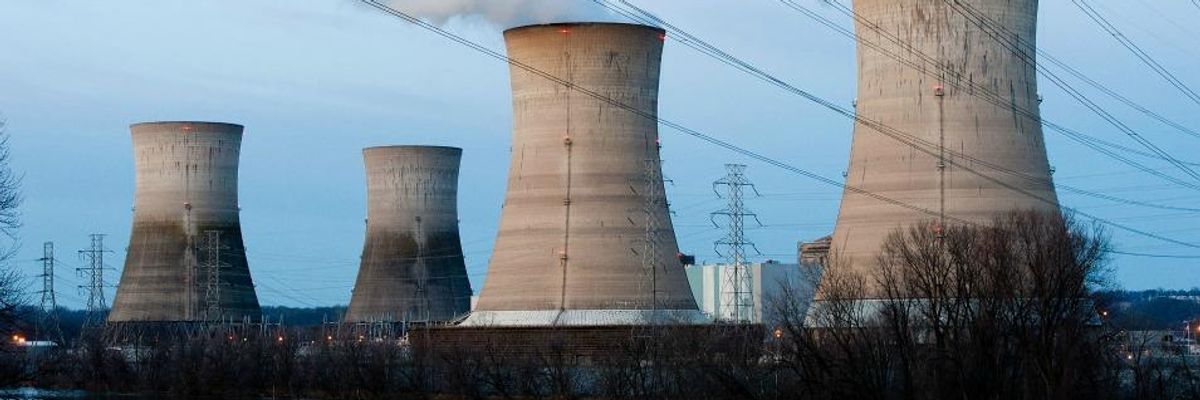Provoking outrage among environmentalists, Trump's EPA sent toxicologist Edward Calabrese--who has argued that loosening radiation regulations could have positive health effects on humans, as well as saving money for businesses that currently work to limit exposure--as its lead witness to testify before the Senate Environment and Public Works Committee.
The EPA sent toxicologist Edward Calabrese, who has argued that loosening radiation regulations could have positive health effects on humans, as well as saving money for businesses that currently work to limit exposure, as its lead witness to testify before the Senate Environment and Public Works Committee.
"Trump's EPA is attempting to convince the committee that allowing more radiation will not be harmful by presenting long-rejected theories as mainstream," said Cindy Folkers, a radiation and health hazard specialist at Beyond Nuclear, in a statement. "The agency is ignoring scientific evidence by instead claiming a little radiation is good for you. This is clearly an attempt to save industry money at the expense of women and children's health."
For decades, the government has advised that any exposure to harmful radiation carries cancer risks for humans.
The proposed rule would call on regulators to consider "various threshold models across the exposure range" when setting guidelines for exposure to substances and chemicals. In a news release about the proposal in April, the EPA quoted Calabrese as calling the move "a major scientific step forward" in assessing the risk of "chemicals and radiation."
In 2016, Calabrese suggested rolling back radiation regulations, saying, "This would have a positive effect on human health as well as save billions and billions and billions of dollars." Two years earlier, he called on the government to right "the past deceptions and [correct] the ongoing errors in environmental regulation."
Calabrese's views have been "generally dismissed by the great bulk of scientists," physicist Jan Beyea told the Associated Press.
The proposal would likely lead to "increases in chemical and radiation exposures in the workplace, home and outdoor environment, including the vicinity of Superfund sites," he added.
As Beyond Nuclear explained, women and children are disproportionately more at risk from the regulatory rollback, with women suffering 50 percent more harm and female children suffering nearly 10 times more harm when exposed to radioactivity than adult males on which U.S. protection standards are based.
"Current standards are already not protective enough of women and children, nor is their susceptibility accounted for in the public health costs," Folkers said. "If the EPA allows even greater exposure, the costs to society could be very high."
The EPA has argued that the regulation is aimed at "increasing transparency on assumptions" about radiation exposure, and the agency demanded that the AP retract its reporting on Tuesday that the "EPA says a little radiation may be healthy"--despite the fact that its own lead witness on Capitol Hill on Wednesday has said just that.

